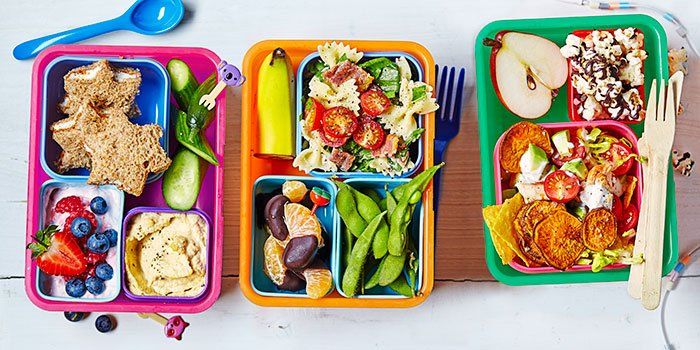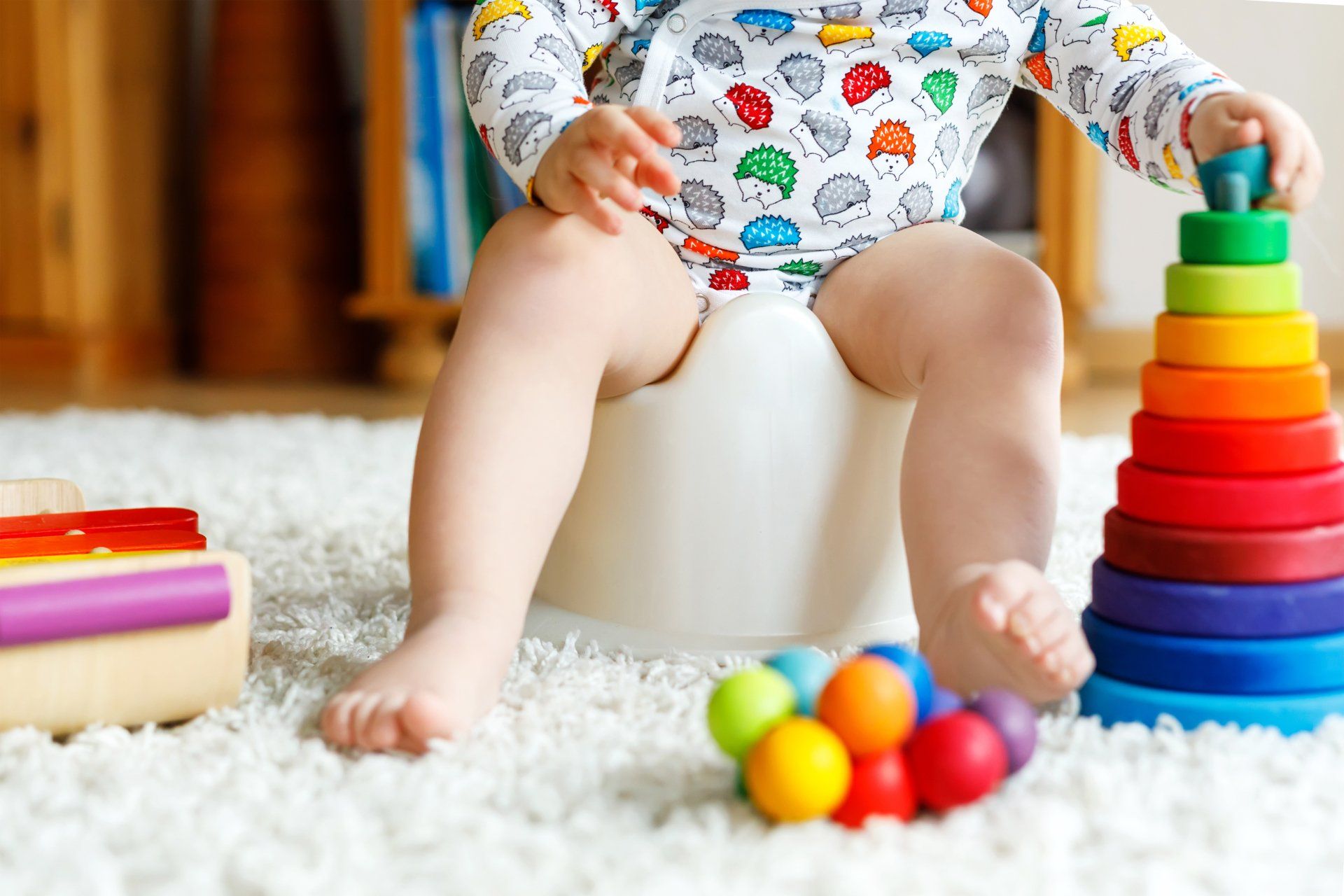In the Lunchbox: Guidelines for healthy eating
Proper nutrition can raise a child’s IQ by between 4% and 20% so it is critical that in a stage of rapid brain development, your young child receives the best food. Diet also has a strong correlation with behaviour, concentration, problem solving, emotions and physical co-ordination. All these can be developed when the child’s optimum nutrition is improved.
Half of the nutrition a baby receives in utero goes directly to brain development. 60% of this brain is made up of fat and the foetus will literally rob the mother of nutrients in order to gain the necessary nutrition. (Ever heard an expectant Mom complaining of a dead brain?) After birth the baby has to rely on what it is fed in order to continue essential brain development. Breast milk and then foods high in essential fats, proteins, vitamins and minerals ensure the growth of the hundred million neurons which should be present in the child’s brain by age two. Just as important are the ‘foods’ to avoid. Refined sugar, fried foods and hydrogenated fats, colourings, flavourings and additives.
This sounds complicated but try thinking ‘stone age diet’ when planning your child’s meals. Fresh fruit, fresh vegetables, unprocessed meat, fish or chicken, full fat milk, wholegrain rice, pastas etc. and water. Nuts, unless crushed, are not advisable under the age of six because of the choking risk. Organic foods are best but can be expensive. However, cutting out all the non-foods from the diet can save you the money to buy higher quality whole foods. Foods we buy in tins, packets and jars contain high levels of sodium, sugar, additives and colourings, all detrimental to a growing brain. Avoid ‘pure’ fruit juices unless they are diluted by at least 70% water and do not give colas, sweets, biscuits, chips etc.
There is an alarming increase in the number of obese children we see in schools. While there may be other reasons for this, most of these children eat a diet based on white flour and sugar and have little exercise. White breads, rice, pasta and sugar add calories without nutrition. Flopping in front of TV’s, computers and tablets is the preferred recreation so the high calorie load is not burned off.
Good dietary habits start at a very young age and will help your child avoid obesity and disease later on, as well as feeding the hungry young brain optimally for academic progress.
So, where does the already harassed parent start?
A nutritious breakfast can make all the difference to your child’s school day and improve their capacity to concentrate and learn.
Examples of a good breakfast:
• Whole grain cereals, oat porridge or mealie meal with milk, soya or yoghurt. Add fruit to high fat, plain yoghurt and avoid the ones aimed at children. Try a little pure honey instead of sugar for a sweetener but fresh fruit is better. (Cereals marketed at children are low in fibre and high in sugar and salt. As Patrick Holford, the nutritionist says, it is like putting rocket fuel in a mini.)
• Scrambled, boiled or poached eggs with whole grain bread or crackers. Any other protein, not sausages and bacon, with some starch such as brown rice or potatoes.
• Children who cannot face eating early could drink a smoothie made with fresh fruit, skinned raw almonds, yoghurt or milk. They could even drink this in the car!
• A sliced banana with little cubes of white cheese on each slice is easy to eat.
• Toast should be made with whole grain bread with butter and sugar-free spreads such as Bovril, Peanut butter or Marmite.
To drink:
• Whole milk or fresh, diluted fruit juice or a smoothie made with fresh fruit and yoghurt.
• Rooibos/herb tea with honey or lemon. Young children should not be drinking Ceylon tea or coffee due to the caffeine content.
And for the school lunches:
Most schools ask that pupils take a mid-morning snack to school. This allows parents to follow their child’s specific dietary needs, likes and dislikes. However, as a parent concerned with the physical health and optimal development of your child, you need to follow some guidelines.
• No sweets, cakes or chocolates should be included. Sugar addiction leads to depression, anxiety, fatigue and learning problems.
• No chips, they are too high in saturated fats, salt and monosodium glutamate.
• Give your child water or milk to drink. Fruit juices contain high sugar levels as the fibre has been removed.
• Commercial biscuits, sweet and savoury, contain high levels of hydrogenated fats. Please don’t send them.
So what’s left!
• Whole-wheat sandwiches/rolls with a protein such as cheese, chicken, meat, fish or peanut butter. Avoid jams and chocolate spreads. Use butter not margarine.
• Slices of chicken or meat.
• Whole grain crackers
• Brown rice cakes
• Homemade popcorn ( the commercial types have a high salt and additive content)
• Biltong
• Raw vegetable sticks such as cucumber, celery and carrot.
• Fresh or dried fruit, not the sugar coated type. Fruit salad gives a choice.
• Cheese cubes or triangles.
• Full fat, low sugar fruit yoghurts
• Whole grain muffins
If you prefer to give your child money for the school tuck shop, be firm about what can be purchased and campaign for the eradication of junk food. Hot dogs with chips and coke do not constitute a balanced meal, nor will they enable your child to focus on the learning that takes place after break.
My child is hungry when he comes home from school.
Instead of reaching for the bread bin or cookie jar, this is a wonderful opportunity to introduce the vegetables they usually turn up their noses at. Create a dip with mashed avocado, a little lemon juice and smooth cream cheese. Arrange a plate with some of these: slices of raw carrot, cucumber, cauliflower florets, cherry tomatoes, celery sticks, strips of red and yellow peppers and even mange tout. Hungry children will eat all their veg in this manner and you need not have the fuss at dinner time. Sadly, tomato sauce is not a vegetable!
Dinner should follow the same nutritional guidelines as above. Cook unprocessed food and serve it attractively. Avoid sausages, fish fingers and processed burgers which all have multiple additives and too much salt. Serve fruit or yoghurt for desert.
So what about ‘treats’? If you want optimally healthy children you should not use sweets, chips, biscuits and cake as a reward. One or two sweets after a good meal will not do much harm but good quality, preferably dark, chocolate is a better option.
Supplements:
As few families eat 3 servings of oily fish per week, children and adults need an omega 3 supplement and a good quality multi-vitamin. The latter is needed because the vitamin content of fruit and veg has declined with industrial farming methods.
Finally, the best way to encourage healthy eating in children is to set an example and to eat as a family. A calm atmosphere and pleasant conversation will do wonders. If your child refuses to eat, make no fuss at all, simply remove his plate when everyone has finished eating and offer nothing but water until the next meal. This prevents him using food as a weapon and reduces your stress. No child will starve themselves!












